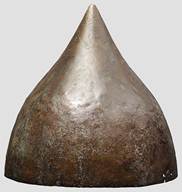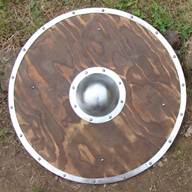

Assyrian Empire
The Neo-Assyrian Empire refers to the end period of the Assyrian Empire, which was from 746BC to 606BC. The Assyrian Empire itself existed from 1235BC to 606 BC, but their culture existed much longer before that. Their culture did not flourish before the 13th century mostly due to subjugation by the more powerful empires that existed south of them, such as the Babylonians (Hooker, 1999). The first monarch of the Empire rose to power in 1235 BC and began the conquest of neighboring empires. By the middle of the ninth century Assyria had conquered Syria, Palestine, Armenia, Babylon, and southern Mesopotamia (the name given to the area of the Tigris-Euphrates river region corresponding to modern day Iraq, northeastern Syria, southeastern Turkey, and southwester Iran). To ensure peace within its conquered territories, the Assyrians invented a new policy towards the conquered in which they would force a large number of the people they conquered to migrate to other areas of the empire; creating a melting pot culture within the middle east region. The last monarch of the empire created the library of tablets of all literature in Mesopotamia know today as Ashurbanipal's great library in their capital city of Nineveh, and it is the tablet that rested within this library that is our single greatest source of knowledge concerning the Mesopotamian cultures (Hooker, 1999).
Bronze was still the predominant metal of the period used to create anything from household appliances to weapons of war. Gold and silver were predominantly used for ornaments. In comparison to the other cultures of this time however, the Assyrians were the first to widely use iron technology. Their technology was adopted from the Hittites, an ancient civilization predating the 8th century BC, who first introduced the technique of iron smelting around 1500 BC. Smelting is a process used to produce metal from ores by changing the oxidation state of the metal ore using a reducing agent such as charcoal. The charcoal produces carbon or carbon monoxide which removes oxygen from the ore and leaves the metal.
HELMETS |
|
|
Name: Conical helmet Origin: 8th century BC Referred to as huliam by the Assyrians, The conical helmet can be described has a calotte helmet that rises to a point above the head and was made mostly of iron due to its lower cost. The picture depicted here is a bronze conical helmet. Other improvements such as additional cheek or ear pieces were made on the conical helmets in the later years of the empire. |
|
CUIRASS |
|
|
Name: Laminar Armor Origin: 8th century BC. In the early period of the Assyrian Empire, the Assyrian charioteer wore a full body laminar or scale armor from the top of the head to the ankles. The head was covered by a coif or hood attached to the elongated armor which was more of a short sleeved laminar robe than a laminar shirt. The full body armor was later shortened in the mid-8th century to reach the upper thigh and the coif was removed in order to allow for close range hand-to-hand combat. |
|
|
Name: Irtu Origin: 7th century BC The simplest example of an irtu was a circular flat plate attached to the center of the chest by leather straps. The circular plate was usually made of bronze or iron and could be substituted with a dome shape metal boss. |
|
SHIELDS |
|
|
Name: Round shield Origin: 8th century BC. The shield was typically made of bronze, wood, or iron; and the boss could be imbedded with spikes and could take many shapes. The inside of the shield was worked with wicker in the late 8th century. The origin of the round shield is unknown, and it is the most pre-eminent shield among all cultures. |
|
|
Name: convex shield Origin: 7th century BC. These shields are very similar to the later Roman scutum in rectangular shape (see figure 32 for image). These shields were made of wooden staves, or reeds, and were bound together with leather thongs. These shields could also be further modified by attaching rows of spikes on the outside so that they may also be used as offensive weapons. |
|
|
Name: Conical shield Origin: 8th century BC The infantry guardsman of the emperor carried with them decorated circular conical shields. These shields were made of leather over a base made of wicker and a sheet bronze central boss. |
|


Integrative Materials Design Center - Worcester Polytechnic Institute





